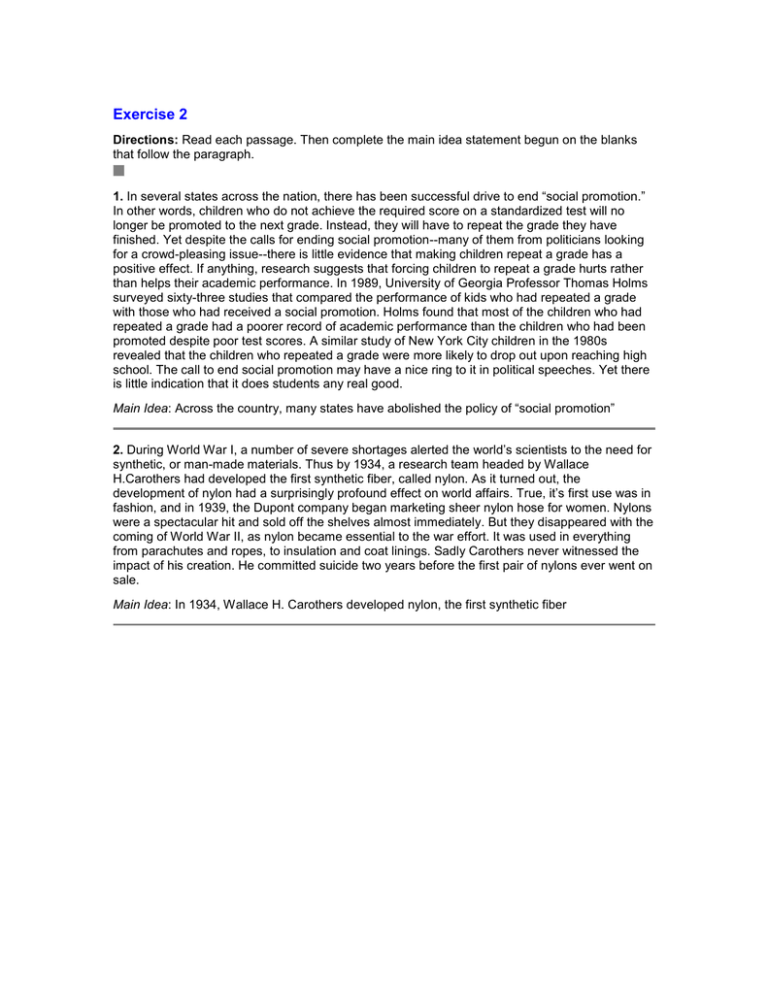Exercise 2
advertisement

Exercise 2 Directions: Read each passage. Then complete the main idea statement begun on the blanks that follow the paragraph. 1. In several states across the nation, there has been successful drive to end “social promotion.” In other words, children who do not achieve the required score on a standardized test will no longer be promoted to the next grade. Instead, they will have to repeat the grade they have finished. Yet despite the calls for ending social promotion--many of them from politicians looking for a crowd-pleasing issue--there is little evidence that making children repeat a grade has a positive effect. If anything, research suggests that forcing children to repeat a grade hurts rather than helps their academic performance. In 1989, University of Georgia Professor Thomas Holms surveyed sixty-three studies that compared the performance of kids who had repeated a grade with those who had received a social promotion. Holms found that most of the children who had repeated a grade had a poorer record of academic performance than the children who had been promoted despite poor test scores. A similar study of New York City children in the 1980s revealed that the children who repeated a grade were more likely to drop out upon reaching high school. The call to end social promotion may have a nice ring to it in political speeches. Yet there is little indication that it does students any real good. Main Idea: Across the country, many states have abolished the policy of “social promotion” 2. During World War I, a number of severe shortages alerted the world’s scientists to the need for synthetic, or man-made materials. Thus by 1934, a research team headed by Wallace H.Carothers had developed the first synthetic fiber, called nylon. As it turned out, the development of nylon had a surprisingly profound effect on world affairs. True, it’s first use was in fashion, and in 1939, the Dupont company began marketing sheer nylon hose for women. Nylons were a spectacular hit and sold off the shelves almost immediately. But they disappeared with the coming of World War II, as nylon became essential to the war effort. It was used in everything from parachutes and ropes, to insulation and coat linings. Sadly Carothers never witnessed the impact of his creation. He committed suicide two years before the first pair of nylons ever went on sale. Main Idea: In 1934, Wallace H. Carothers developed nylon, the first synthetic fiber











